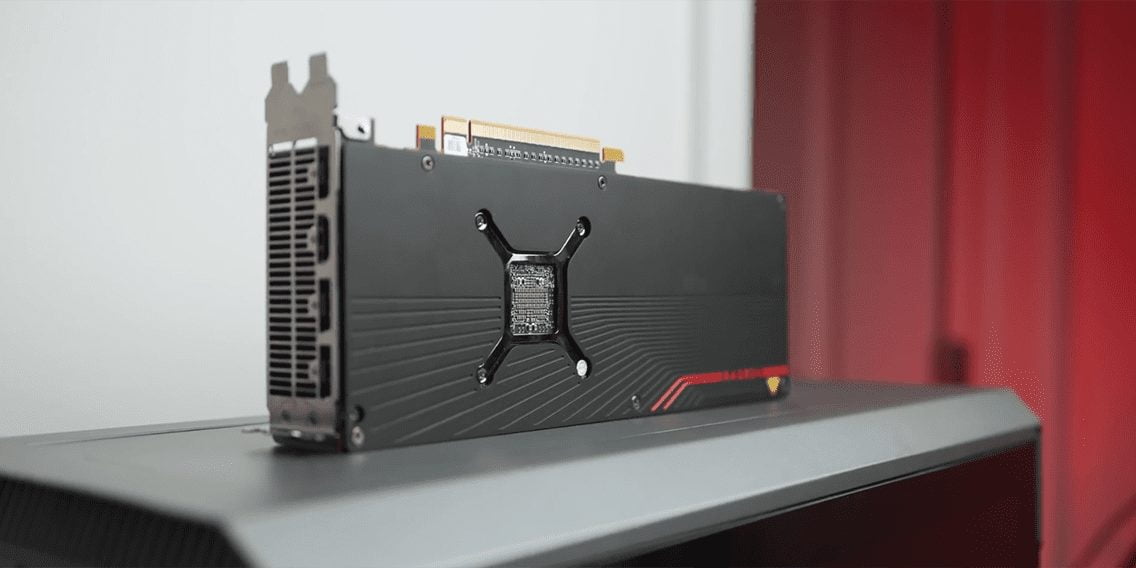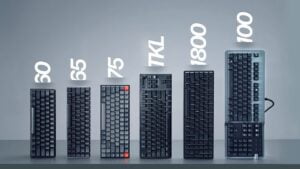AMD RX 5700 XT & RX 5700 Review

Share:
So the day that everyone seems to be waiting for is finally here. AMD is officially launching their RX 5700 series GPUs and boy has it been an interesting few weeks. You see this all started at E3 when AMD showed off their shiny new Navi GPUs, particularly the RX 5700 series, and then Team Green had to respond with their RTX Super cards that sort of set a benchmark as to what these cards are competing with. Just a couple of days ago before this launch, AMD threw an interesting curve ball at us with price cuts on these new GPUs at launch. This is just a typical AMD thing, I’m not really surprised. But now after more than a year of rumors, we can finally talk about how the RX 5700 XT and the RX 5700 perform in benchmarks, and whether they are actually worth buying over the RTX Super cards that Team Green launched just last week.
To be honest with you, a lot of this review had to be redone just because of AMD’s new lower prices on these graphics cards. But ultimately that’s okay, especially since the fundamentals of the RX 5700 series hasn’t changed. For starters, if you want a bit more information about these new GPUs, specifically regarding the architecture, you should check out our Navi 10 architecture explained video. However, in this review I’m gonna be focusing a lot more on the performance benchmarks and not really getting into the other stuff.
RX 5700 / 5700 XT Specs
So let’s do a quick spec recap on both of these new GPUs. They are both based off the Navi 10 core and use a 7nm manufacturing process. The RX 5700 XT will have 2560 stream processors, 8GB of GDDR6 memory with 448GB per second of bandwidth, a board power of 225 watts, and a now lower price of $400 USD. Its base and game frequencies are 1605Mhz and 1755Mhz respectively. The RX 5700 gets cut down to 2304 stream processors and lower frequencies of 1465Mhz and 1625Mhz, which lowers the board power to 180 watts. It still gets 8GB of GDDR6 and a new price of $350 USD. Now about the new pricing, it’s really made things interesting because after seeing how NVIDIA’s RTX Super cards perform I think AMD might’ve come to a realization that they’ve priced these new GPUs a little too high, especially if you consider that those new RTX Super cards come with two free games.
About that price cut….
So this is how things line up right now. The RX 5700 XT is a whole hundred dollars cheaper than the RTX 2070 Super, making it the exact same price as the RTX 2060 Super. The RX 5700’s price is about the same as the RTX 2060. Another thing a lot of people have brought up is how used GTX 1080 Ti’s cost around $350 to $400 these days. I’d be a bit worried of getting one that’s been abused in countless hours of cryptocurrency mining, but that’s certainly another option if you’re willing to take the risk.
A closer look at the cards!
Let’s take a look at the cards to see what you’re getting, since at launch there won’t be any custom designs, which is unfortunate. Those will be available to buy a month or more afterwards. Starting with the RX 5700 XT, it’s one good looking graphics card with a swooping heatsink shroud that almost looks dented, but that design is supposed to increase internal airflow and lower the amount of noise too.
Flipping the cart around. There’s a full coverage back plate that uses the same cool rib design as the top shroud, but this time it’s broken up by a smooth area along with a red strip. One of our concerns with these blower style cards is that they’re always fighting for airflow, but the RX 5700 XT’s back edge is actually pretty open, which should increase the amount of air it can draw in. Personally, my favorite angle of this card is from the edge, which has the glowing Radeon logo. It looks clean and really well done, and that’s where the 8 + 6-pin power connectors are. For output, AMD has kept it pretty simple with three DisplayPort 1.4 B connectors and a single HDMI 2.0 B on both cards. Now by comparison to the RX 5700 XT, the RX 5700 is almost boring. Basically, the entire Strout is a uniform gray with the red ray on text and a small amount of silver around the fan.
Honestly, I think AMD should have added a backplate here since the RTX 2060 and the RTX 2060 Super Founders Edition have cool-looking backplates. This just looks cheap in my opinion, and the big concern is that in these designers chose to close the back edge, which kills airflow. This is just another odd decision since adding a secondary intake area should have been a no-brainer. Wrapping things up, the power connectors are identical to the RX 5700 XT with an 8+6-pin layout. Now looking at these cards, it’s pretty easy to be concerned about acoustic performance, especially since blower style coolers are always louder than downdraft coolers.
RX 5700 / 5700 XT Acoustics & Power Consumption
When we listened to all of these GPUs at load we were pleased to realize that all of them are super quiet. The RX 5700 series cards are a lot louder than the RTX Super series, but it is all fan noise. Luckily there wasn’t any coil wine on the AMD GPUs, which is certainly good news. I do want to mention that the coil wine on the RTX 2060 Super certainly did influence its results, which is just too bad.
I also want to quickly look at power consumption because AMD has made a lot of progress with their 7nm manufacturing process. But is it enough? Well it really does look like the RX 5700 series has nearly closed the gap, but that isn’t necessarily good news. Remember NVIDIA is still on 12nm and it took a super efficient 7nm process for AMD to draw even. At least this time anyone who buys a Radeon card won’t have to worry about super high power draw.
RX 5700 / 5700 XT Overall Performance & Benchmarks
So I think it’s time to talk about how these cards stack up. But I’m going to start things a little bit differently this time starting with the overall performance benchmark list.
So this is what things look like after a dozen games being tested, and you can actually see why AMD reduced their prices. You’ll see in the next few moments that Navi’s performance is very strong against NVIDIA’s RTX 2070 and the RTX 2060, but the Super series is very different. In raw numbers the RX 5700 XT loses by about 12% overall to the RTX 2070 Super, and the RX 5700 sits right in between the RTX 2060 and the RTX 2060 Super. There’s really nothing to complain about here since all of these are really strong numbers. However, when it comes to raw value AMD actually leads by a pretty big margin.
The RX 5700 XT’s new $400 price causes it to just dominate the $500 RTX 2070 Super. Even the RX 5700 looks pretty good against the RTX 2060 Super. I mean it doesn’t offer more performance, but it does cost a whole $50 less while also beating the vanilla RTX 2060 by about 7%. Like I said in the RTX Super review, the pricing of these two RTX 2060 cards is just way too high right now. Also guys do keep in mind that the GTX 1080 Ti provides almost similar performance to the RTX 2080, so if you can find that GPU for $400 or less, it would blow any of these cards are right out of the water. But as I mentioned earlier, be aware of the mining cards in the used market. So where does this leave the RX 5700 and the RX 5700? Well other than the average frame rates I already mentioned during testing, we also noticed that there lower 1% frame rates were all over the place.
In some games like Battlefield 5 they easily beat the NVIDIA cards, but in some really popular titles like Fortnite, PUBG and Warhammer II Total War, they really lagged pretty far behind. So obviously consistency is still an issue for AMD. So the big question is whether or not you should buy the RX 5700 series over GeForce RTX, and the answer to that really depends on what you think of NVIDIA’s features like Ray Tracing DLSS and content adaptive shading. You see if you only care about standard game rendering, the RX 5700 is a better buy than the RTX 2070 Super. And the same can be said about the RX 5700 versus the RTX 2060 Super. But you can’t just ignore what NVIDIA has to offer, especially since a lot of these games are including ray tracing elements and performance is improving, so that does count for something.
So there you have it, I certainly think AMD have made huge improvements with this generation and they are certainly on the right track, but they still have some catching up to do.




















